- Essential Tips for Growing Strawberries in Spring
- 1. Choose the right variety
- 2. Provide ample sunlight
- 3. Prepare the soil
- 4. Plant at the right time
- 5. Provide adequate water
- 6. Mulch to conserve moisture
- 7. Fertilize regularly
- 8. Monitor for pests and diseases
- 9. Harvest at the right time
- 10. Enjoy the fruits of your labor!
- Importance of March Tasks for Strawberry Plants
- 1. Pruning
- 2. Weed Control
- 3. Fertilization
- 4. Mulching
- 5. Pest and Disease Management
- 6. Irrigation
- 7. Monitoring
- Conclusion
- Pruning Techniques for a Successful Strawberry Harvest
- When to Prune
- Why Prune
- Pruning Techniques
- After pruning
- Conclusion
- Protecting Strawberry Plants from Spring Frost
- Covering the plants
- Using mulch
- Watering the plants
- Monitoring weather forecasts
- Providing additional heat
- Soil Preparation for Healthy Strawberry Growth
- Watering and Fertilizing Strategies for Strawberry Plants
- Watering
- Fertilizing
- Identifying and Treating Common Strawberry Diseases
- 1. Gray Mold (Botrytis Fruit Rot)
- 2. Powdery Mildew
- 3. Leaf Spot (Mycosphaerella Fragariae)
- 4. Verticillium Wilt
- Harvesting and Storing Fresh Strawberries in March
- 1. Refrigeration:
- 2. Freezing:
- Question-answer:
- When is the best time to plant strawberries?
- How should I prepare the soil before planting strawberries?
- Do strawberries need full sun?
- How often should I water strawberries?
- When should I fertilize my strawberry plants?
- How do I protect strawberries from pests?
- Video: Jobs to do in your garden in March!
March is the perfect time to start preparing your strawberry plants for a successful growing season. As the weather begins to warm up and the days get longer, it’s important to take a few key steps to ensure that your strawberry plants are healthy and productive. By following these must-do tasks for strawberries in March, you’ll be well on your way to enjoying a bountiful harvest of delicious, juicy berries.
Prune and thin out the plants. Before the new growth starts, it’s a good idea to prune your strawberry plants to remove any dead or damaged foliage. This will help promote vigorous growth in the coming months. You should also thin out overcrowded plants to allow for better air circulation and to prevent the spread of disease. Simply remove any weak or spindly plants, leaving only the healthiest and strongest ones.
Fertilize the soil. March is the ideal time to give your strawberry plants a boost of nutrients. Before applying any fertilizer, test your soil to determine its pH level. Strawberries prefer slightly acidic soil, with a pH between 5.5 and 6.5. If necessary, amend your soil with lime or sulfur to bring it to the optimal pH range. Once your soil is ready, choose a balanced fertilizer that is specifically formulated for strawberries and apply it according to the package instructions.
Weed and mulch the beds. Weeds can compete with your strawberry plants for nutrients and moisture, so it’s important to keep your beds weed-free. Pull any weeds that have sprouted, being careful not to disturb the strawberry plants. After weeding, apply a layer of organic mulch around the plants to help suppress weed growth and conserve soil moisture. Pine straw, straw, or shredded leaves are all excellent mulch options for strawberries.
By taking these essential tasks for strawberries in March, you’ll be setting your plants up for success and ensuring a productive strawberry season. With a little bit of effort now, you’ll be able to enjoy the sweet taste of freshly picked strawberries later in the spring.
Essential Tips for Growing Strawberries in Spring
Growing strawberries in the spring is a rewarding and delicious endeavor. By following a few essential tips, you can ensure a successful strawberry harvest.
1. Choose the right variety
When selecting strawberry plants for your garden, choose a variety that is well-suited to your climate and growing conditions. Some popular spring strawberry varieties include Jewel, Chandler, and Sequoia.
2. Provide ample sunlight
Strawberries thrive in full sunlight, so make sure to choose a location in your garden that receives at least 6-8 hours of direct sunlight each day. This will promote healthy growth and tasty fruit.
3. Prepare the soil
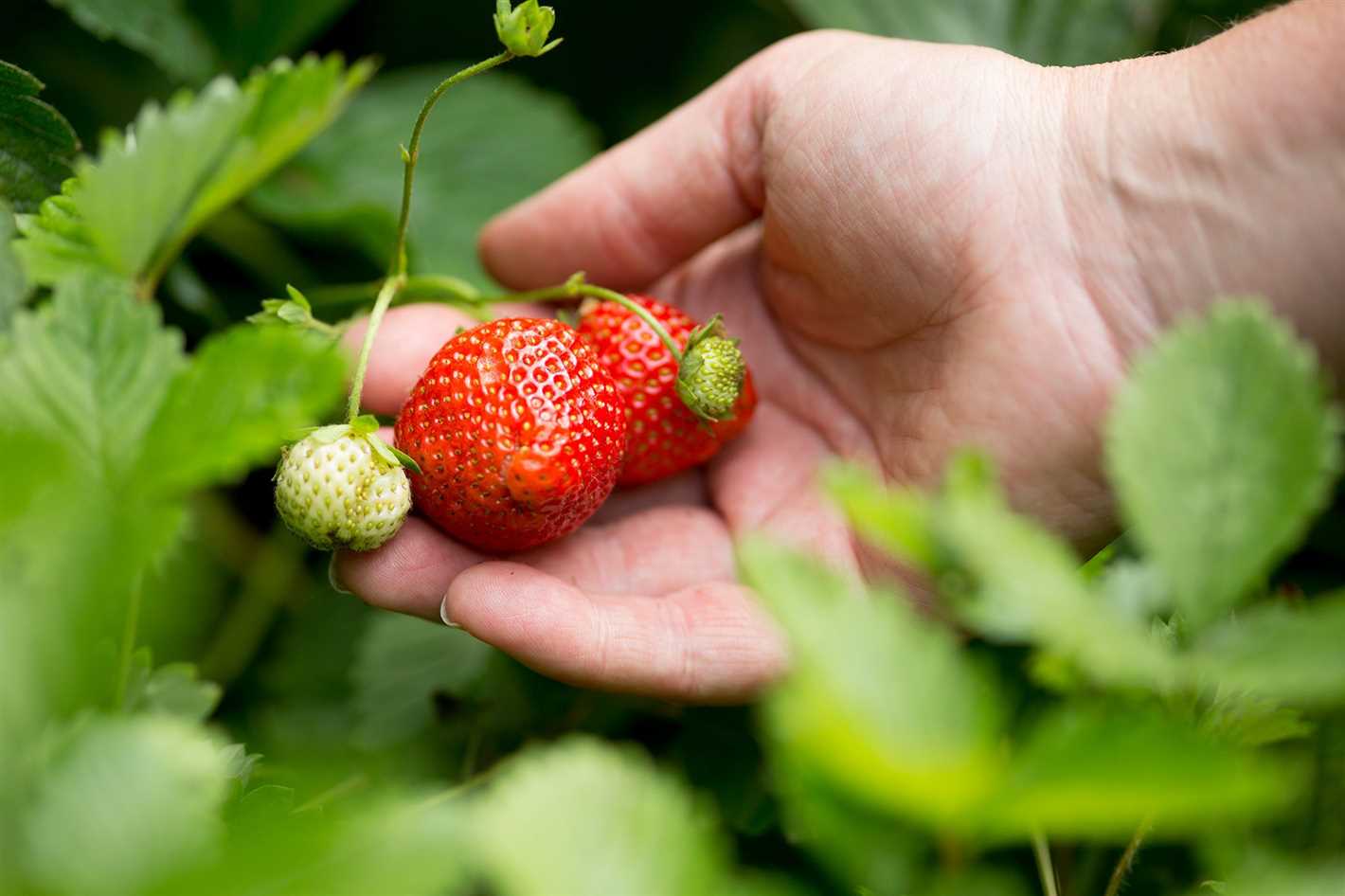
Before planting your strawberries, prepare the soil by removing any weeds or grass. Dig in and amend the soil with compost or well-rotted manure to improve its fertility and drainage.
4. Plant at the right time
Spring is the ideal time to plant strawberries. Aim to plant them as soon as the soil can be worked in your area, usually in March or early April. This will give the plants ample time to establish before the summer heat arrives.
5. Provide adequate water
Strawberries require consistent moisture to thrive. Water deeply and regularly, aiming for about 1-2 inches of water per week. Avoid overhead watering, as this can promote disease. Instead, water at the base of the plants using drip irrigation or a soaker hose.
6. Mulch to conserve moisture
To conserve moisture and suppress weeds, apply a layer of organic mulch around your strawberry plants. Straw, wood chips, or shredded leaves all make excellent mulch options. Apply the mulch in a 2-3-inch layer, taking care to keep it away from the crowns of the plants.
7. Fertilize regularly
Strawberries are heavy feeders and benefit from regular fertilization. Apply a balanced organic fertilizer or compost tea every 4-6 weeks throughout the growing season. Be sure to follow the instructions on the fertilizer packaging for proper application rates.
8. Monitor for pests and diseases
Keep a close eye on your strawberry plants for signs of pests or diseases. Common issues include aphids, slugs, and fungal diseases like powdery mildew or gray mold. If you notice any problems, take prompt action to prevent further damage.
9. Harvest at the right time
It’s important to pick your ripe strawberries at the right time. When the berries are fully red and easily detach from the stem with a gentle tug, they are ready to be harvested. Avoid leaving ripe berries on the plants for too long, as this can attract pests or lead to rotting.
10. Enjoy the fruits of your labor!
Once your strawberries are harvested, savor the sweet rewards of your hard work. Whether enjoyed fresh, in desserts, or preserved as jam, strawberries are a true delight of spring.
By following these essential tips, you’ll be well on your way to a successful strawberry harvest in the spring. Happy growing!
Importance of March Tasks for Strawberry Plants
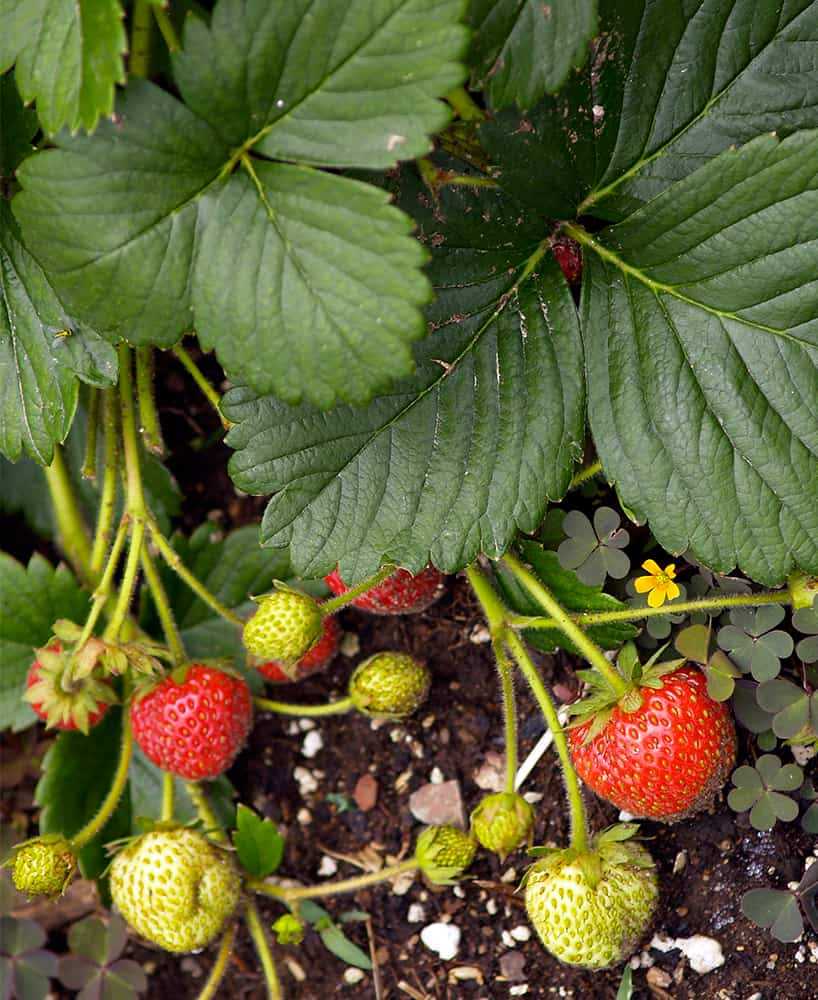
1. Pruning
Pruning is an essential task for strawberry plants in March. It helps to remove old, dead, or diseased leaves and stems, promoting healthy growth for the coming season. Pruning also improves air circulation around the plants and reduces the risk of fungal diseases.
2. Weed Control
Weed control is crucial in March to prevent competition for nutrients and water. Weeds can also provide shelter for pests and diseases, which can harm the strawberry plants. Regular weeding helps maintain a clean and healthy growing environment for the strawberries.
3. Fertilization
Fertilizing the soil in March is important for strawberry plants. It provides essential nutrients needed for healthy growth and development. Apply a balanced fertilizer according to the recommended dosage to enrich the soil and support the plants throughout the growing season.
4. Mulching
Mulching is a beneficial task for strawberry plants in March. It helps to conserve moisture, suppress weed growth, and regulate soil temperature. Apply a layer of organic mulch around the plants, such as straw or wood chips, to create a protective barrier and improve overall plant health.
5. Pest and Disease Management
In March, it’s important to inspect strawberry plants for any signs of pests or diseases. Implement preventive measures, such as applying organic pest control methods or using netting to protect the plants from birds and insects. Early detection and prompt action can prevent the spread of pests and diseases.
6. Irrigation
Proper irrigation is crucial for strawberry plants in March. Ensure that the plants receive adequate water, especially during dry periods. Watering deeply and evenly will promote healthy root development and prevent water stress, which can negatively impact fruit production.
7. Monitoring
Regular monitoring of the strawberry plants in March is essential to identify any issues early on. Keep an eye out for signs of nutrient deficiencies, pest infestations, or disease symptoms. This allows for timely intervention and proper management, ensuring the health and productivity of the strawberry plants.
Conclusion
March tasks for strawberry plants play a vital role in their overall health and productivity. By pruning, controlling weeds, fertilizing, mulching, managing pests and diseases, ensuring proper irrigation, and monitoring regularly, growers can set their strawberry plants up for success and enjoy a bountiful harvest in the coming months.
Pruning Techniques for a Successful Strawberry Harvest
When to Prune
Pruning strawberries is an essential task that should be done in the early spring. It is best to prune them after the threat of frost has passed, but before new growth begins. This is usually in March or early April, depending on your specific climate.
Why Prune

Pruning helps to improve the overall health and productivity of your strawberry plants. It allows for better airflow and sunlight penetration, which can help prevent diseases and improve fruit quality. Pruning also helps to remove old, damaged, or diseased leaves and encourage the growth of new shoots.
Pruning Techniques
Here are some pruning techniques you can use to ensure a successful strawberry harvest:
- Remove old leaves: Start by removing any old or yellow leaves from the strawberry plants. These leaves may be damaged or diseased and can harbor pests and diseases.
- Trim runners: Strawberry plants often produce runners, which are long stems that grow away from the main plant and develop new plants. While runners can help with propagation, they can also be a drain on the plant’s energy. Trim back the runners to redirect the plant’s energy into fruit production.
- Thin out crowded plants: If your strawberry bed is overcrowded, it can lead to poor airflow and increased risk of disease. Thin out the plants by removing any weak or overcrowded ones, leaving enough space for each plant to grow and receive adequate sunlight.
- Prune damaged or diseased stems: Inspect the strawberry plants for any damaged or diseased stems and prune them back to healthy tissue. This will help prevent the spread of diseases and improve the overall health of the plant.
After pruning
After pruning, it is important to provide the strawberry plants with proper care. Water them well, especially during dry spells, and apply a balanced fertilizer to promote healthy growth. Mulching around the plants can help conserve moisture and suppress weeds. Regularly monitor the plants for pests and diseases, and take appropriate action if any issues arise.
Conclusion
Pruning is a key task in achieving a successful strawberry harvest. By following these pruning techniques and providing the plants with proper care, you can improve their health and productivity, resulting in plentiful and delicious strawberries.
Protecting Strawberry Plants from Spring Frost
Spring frosts can be damaging to strawberry plants, especially when they are in bloom or have small fruit on them. Taking precautions to protect your strawberry plants from spring frost can help ensure a good harvest later in the season. Here are some tips to protect your strawberry plants:
Covering the plants
One of the easiest ways to protect your strawberry plants from spring frost is by covering them. You can use various materials such as row covers, blankets, or even plastic sheets to create a barrier between the plants and the cold air. Make sure the cover extends all the way to the ground and is secured tightly to prevent cold air from seeping in.
Using mulch
Applying a thick layer of mulch around your strawberry plants can help insulate the soil and protect the plants from frost. The mulch acts as a natural barrier, keeping the soil and plant roots warmer during cold nights. You can use straw, shredded leaves, or compost as mulch for your strawberry plants.
Watering the plants
Watering your strawberry plants before a frost can provide some protection. Moist soil holds heat better than dry soil, so watering the plants before a frost can help keep the soil temperature more stable. However, be careful not to overwater, as soggy soil can lead to root rot.
Monitoring weather forecasts
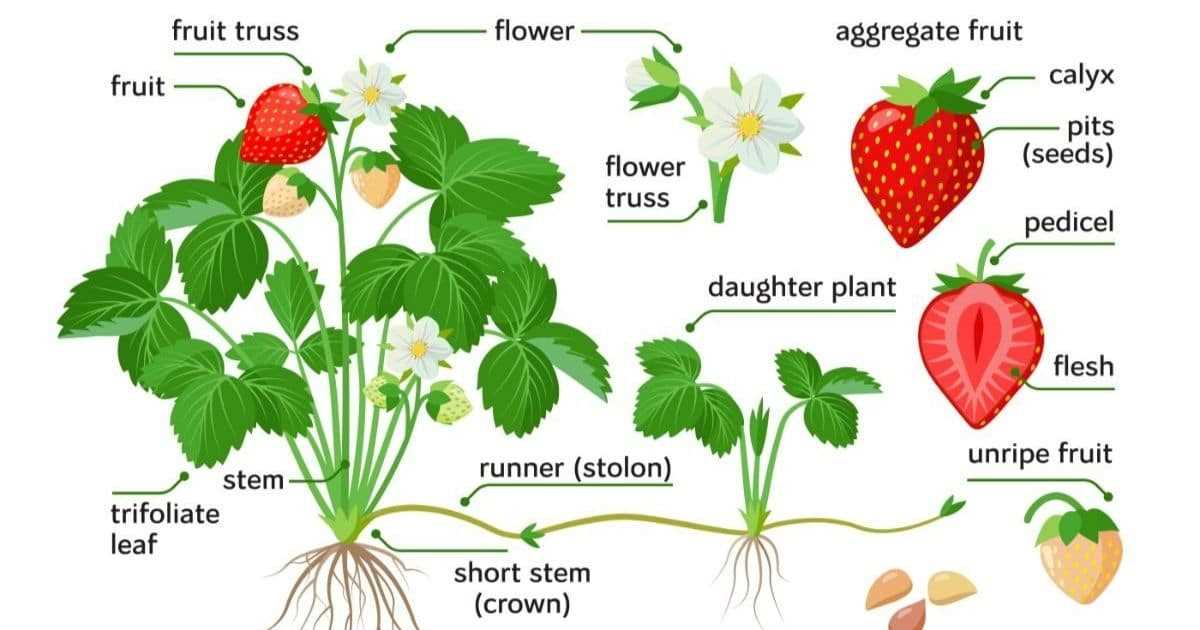
Keeping an eye on the weather forecasts is crucial for protecting your strawberry plants from spring frost. When a frost is predicted, take action by covering or mulching your plants. Additionally, being aware of the local frost dates can help you plan ahead and take preemptive measures to protect your plants.
Providing additional heat
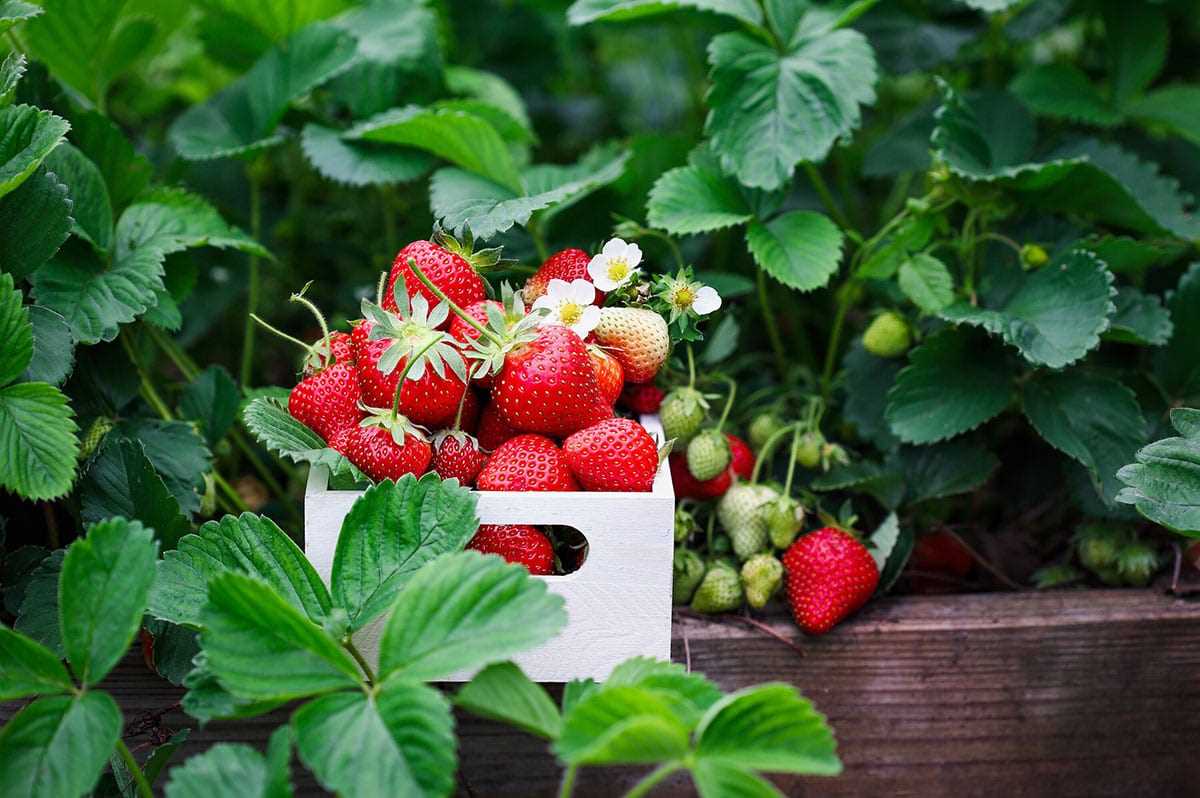
In extreme cases, when the frost is expected to be severe, you may need to provide additional heat to your strawberry plants. This can be done using frost blankets or even small heaters. However, make sure to follow safety precautions and avoid using open flames near plants.
By taking these steps to protect your strawberry plants from spring frost, you can increase the chances of a successful strawberry harvest. Remember to always monitor the weather and adjust your protection methods accordingly.
Soil Preparation for Healthy Strawberry Growth
- Test the Soil: Before planting strawberries, it’s important to test the soil pH. Strawberries prefer a slightly acidic soil with a pH between 5.5 and 6.5. You can purchase a soil testing kit or send a sample to a testing lab for accurate results.
- Amend the Soil: If the soil pH is too high or too low, you will need to amend it to create the ideal growing conditions for strawberries. To lower the pH, you can add sulfur or peat moss. To raise the pH, you can add lime or wood ash. Follow the instructions on the packaging for proper application rates.
- Remove Weeds: Clear the area of weeds to prevent competition for nutrients and moisture. You can manually pull them out or use a weed killer, but be sure to follow the instructions and avoid using chemicals that can harm the strawberries.
- Improve Drainage: Strawberries prefer well-draining soil to prevent waterlogged roots. If your soil doesn’t drain well, you can amend it with organic matter such as compost or aged manure to improve the drainage.
- Loosen the Soil: Use a garden fork or tiller to loosen the soil to a depth of 12 to 18 inches. This will help the roots penetrate the soil easily and promote healthy growth.
- Add Fertilizer: Before planting, incorporate a balanced fertilizer into the soil to provide essential nutrients. Look for a fertilizer with a ratio of 10-10-10 or 14-14-14 and follow the recommended application rates.
- Apply Mulch: After planting, apply a layer of organic mulch around the strawberry plants to conserve soil moisture, suppress weeds, and regulate soil temperature. Organic materials like straw, wood chips, or leaves make excellent mulch for strawberries.
- Water the Soil: Water the soil thoroughly after planting strawberries to ensure good root establishment. Strawberries require consistent moisture, so water regularly and deeply throughout the growing season.
- Maintain Proper pH: Regularly monitor the soil pH and make adjustments as needed to keep it within the ideal range. This will ensure the plants have access to the necessary nutrients for healthy growth and fruit production.
Watering and Fertilizing Strategies for Strawberry Plants
Proper watering and fertilization are essential for the health and productivity of strawberry plants. In this section, we will discuss some strategies to help you effectively water and fertilize your strawberry plants to ensure maximum yield and quality.
Watering
Strawberry plants have shallow roots, and they require consistent moisture to thrive. Here are some watering strategies to follow:
- Water deeply, but infrequently: It’s better to water deeply and thoroughly, rather than frequently with shallow watering. This encourages the roots to grow deeper.
- Avoid overhead watering: Strawberries are prone to fungal diseases, so it’s best to avoid overhead watering. Instead, use drip irrigation or water directly at the base of the plants.
- Water in the morning: Watering in the morning allows the leaves to dry before nighttime, reducing the risk of fungal diseases.
- Monitor soil moisture: Regularly check the moisture level of the soil. It should be evenly moist, but not waterlogged. Adjust your watering frequency accordingly.
Fertilizing
Proper fertilization provides the necessary nutrients for healthy growth and abundant strawberry production. Follow these fertilizing strategies:
- Start with a balanced fertilizer: Use a balanced, slow-release granular fertilizer with an N-P-K ratio of around 10-10-10 to provide a good foundation of essential nutrients.
- Apply fertilizers in early spring: Apply the initial round of fertilizer when new growth appears in early spring, just before flowering. This helps promote healthy growth and fruit development.
- Side-dress with compost: In addition to using a balanced fertilizer, side-dress the plants with compost or well-rotted manure. This provides additional organic matter and nutrients to the soil.
- Monitor plant growth: Pay attention to the growth and appearance of your strawberry plants. If they appear pale or stunted, they may need additional fertilization.
- Avoid over-fertilization: While fertilization is important, it’s crucial not to overdo it. Excessive fertilizer can lead to excessive foliage growth at the expense of fruit production. Follow the recommended rates and guidelines for the specific fertilizer you’re using.
By following these watering and fertilizing strategies, you can ensure that your strawberry plants receive the proper care they need to produce an abundant harvest of delicious strawberries. Remember to monitor the moisture level, adjust watering frequency as needed, and provide the necessary nutrients for healthy growth and fruit development.
Identifying and Treating Common Strawberry Diseases
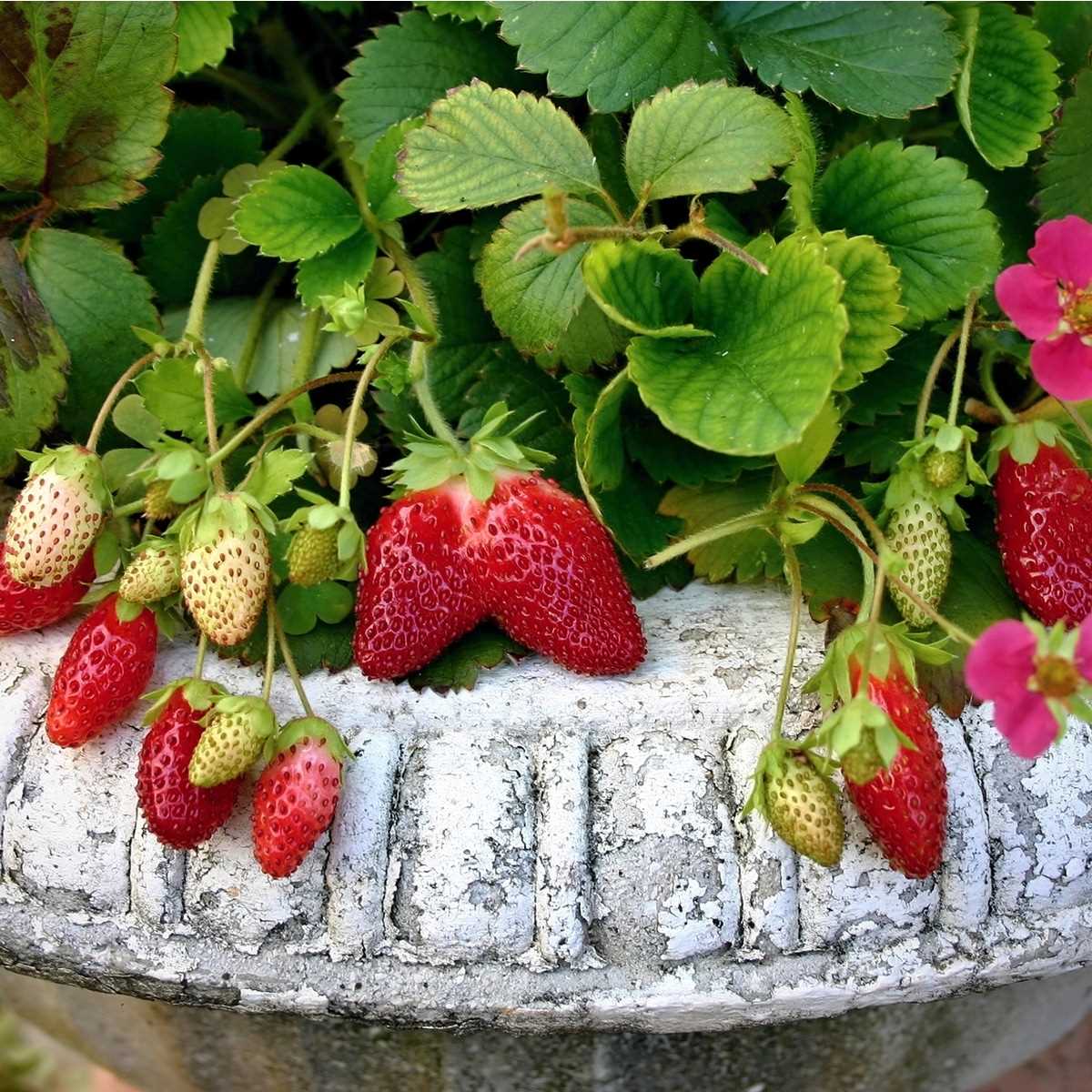
1. Gray Mold (Botrytis Fruit Rot)
Gray mold is a common fungal disease that affects strawberries, especially during wet and humid conditions. It usually starts as a small, water-soaked spot on the fruit, which then turns brown and fuzzy. The mold can spread rapidly and cause significant damage to the crop if not controlled.
Treatment:
- Remove and destroy any infected fruit or plants immediately to prevent the spread of the disease.
- Improve air circulation around the plants by pruning and thinning them.
- Avoid overhead watering, as it can create a humid environment favorable for the growth of the fungus.
- Apply a fungicide labeled for gray mold control, following the instructions on the product.
2. Powdery Mildew
Powdery mildew is a fungal disease that commonly affects strawberry plants, especially during periods of cool, humid weather. It appears as a white, powdery coating on the leaves, stems, and fruit of the plant. Severe infections can cause stunted growth and reduce fruit quality.
Treatment:
- Prune and thin the plants to improve air circulation and reduce humidity around the leaves.
- Avoid overhead watering and water the plants at the base to keep the foliage dry.
- Apply fungicides specifically labeled for powdery mildew control, following the recommended application rates and timing.
3. Leaf Spot (Mycosphaerella Fragariae)
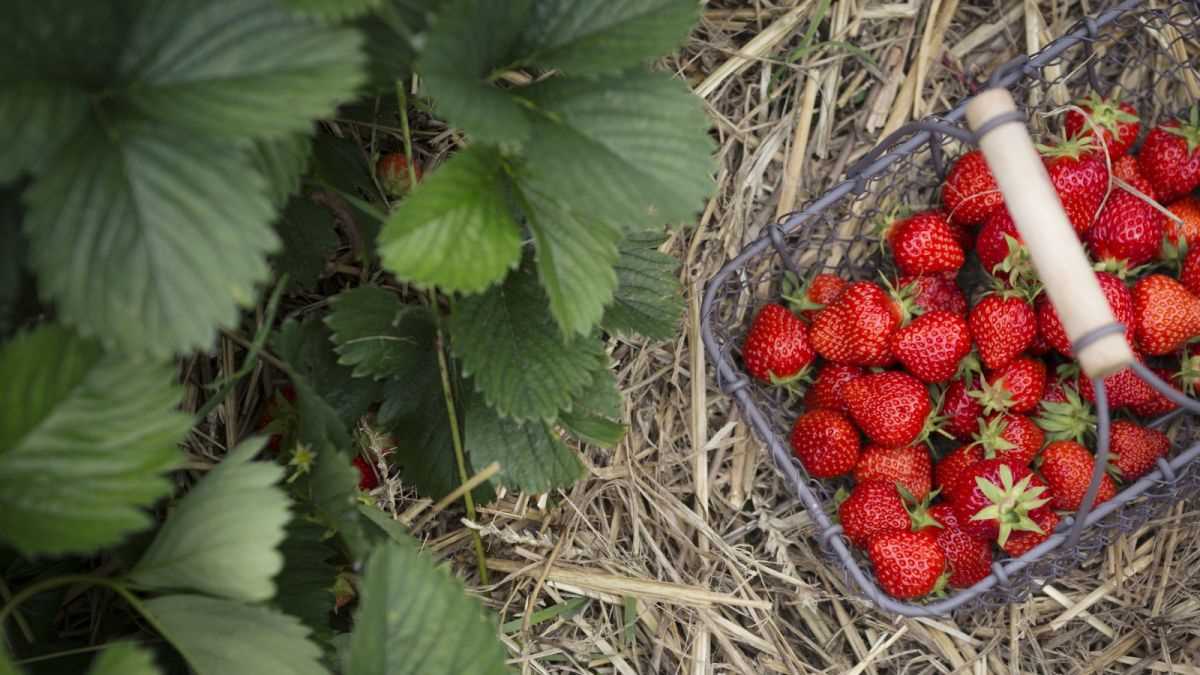
Leaf spot is a fungal disease that affects the leaves of strawberry plants. It appears as circular, reddish-brown spots with a lighter center. As the disease progresses, the spots may enlarge and merge, causing the leaves to turn yellow and drop prematurely.
Treatment:
- Remove and destroy any infected leaves or plant debris to prevent the spread of the disease.
- Provide adequate spacing between plants to improve air circulation.
- Avoid overhead watering and water the plants at the base to keep the foliage dry.
- Apply fungicides labeled for leaf spot control, following the instructions on the product’s label.
4. Verticillium Wilt
Verticillium wilt is a fungal disease that affects a wide range of plants, including strawberries. It causes wilting, yellowing, and browning of the leaves, usually on one side of the plant. The disease is caused by soil-borne fungi and can persist in the soil for several years.
Treatment:
- Remove and destroy infected plants to prevent the spread of the disease.
- Avoid planting strawberries in soil that has a history of verticillium wilt.
- Practice crop rotation, avoiding planting strawberries and other susceptible crops in the same area for several years.
- Plant resistant or tolerant strawberry varieties whenever possible.
By properly identifying and treating these common strawberry diseases, you can ensure the health and productivity of your strawberry plants.
Harvesting and Storing Fresh Strawberries in March
March is an exciting time for strawberry growers, as it marks the beginning of the harvesting season. Here are some tips for harvesting and storing fresh strawberries:
- Timing: The best time to harvest strawberries is in the morning when the berries are cool and firm. Avoid harvesting strawberries on rainy or damp days, as this can lead to spoilage.
- Harvesting: Gently pick the strawberries by holding the stem near the fruit and pulling it with a slight twist. Be careful not to squeeze or bruise the berries.
- Quality check: Inspect each strawberry for ripeness and quality. Look for bright red color, firmness, and plumpness. Avoid picking overripe or damaged berries.
- Storing: After harvesting, it’s important to store fresh strawberries properly to maintain their freshness. Remove any damaged or overripe berries, as they can cause others to spoil quickly.
There are two main methods for storing fresh strawberries:
1. Refrigeration:
– Dry method: Arrange the strawberries in a single layer on a paper towel-lined tray or container. Place the tray in the refrigerator and store for up to 2-3 days.
– Wet method: Rinse the strawberries gently in cool water and pat them dry with a paper towel. Place the strawberries in a breathable container, such as a ventilated plastic bag or a partially open container, and store in the refrigerator for up to 2-3 days.
2. Freezing:
– Whole berries: Wash and pat dry the strawberries. Remove the stems and leaves. Place the strawberries in a single layer on a baking sheet lined with parchment paper, and freeze for a few hours. Once frozen, transfer the berries to a freezer-safe bag or container and store for up to 9-12 months.
– Sliced or crushed berries: Follow the same process as for whole berries, but slice or crush the strawberries before freezing. This is ideal for making smoothies, jams, or other strawberry-based recipes.
Remember to label and date your stored strawberries for easy identification. Enjoy the delicious taste of fresh strawberries throughout the year by properly harvesting and storing them in March!
Question-answer:
When is the best time to plant strawberries?
The best time to plant strawberries is in early spring, when soil temperatures are around 50°F (10°C) and the threat of frost has passed.
How should I prepare the soil before planting strawberries?
Before planting strawberries, you should prepare the soil by removing any weeds or grass, and loosening it with a garden fork or tiller. You can then amend the soil with compost or other organic matter to improve drainage and fertility.
Do strawberries need full sun?
Yes, strawberries require full sun in order to thrive. They need at least 6-8 hours of direct sunlight per day to produce sweet and flavorful berries.
How often should I water strawberries?
Strawberries should be watered regularly, especially during dry periods. It is important to keep the soil consistently moist, but not soggy. Aim to provide 1-1.5 inches of water per week, either through rainfall or irrigation.
When should I fertilize my strawberry plants?
You should fertilize strawberry plants in early spring, just before new growth begins. Use a balanced fertilizer, such as a 10-10-10 or 14-14-14, and follow the package instructions for application rates.
How do I protect strawberries from pests?
To protect strawberries from pests, you can use floating row covers or netting to physically block insects and birds from reaching the plants. You can also apply organic pest control methods, such as using insecticidal soap or neem oil, to deter pests.







